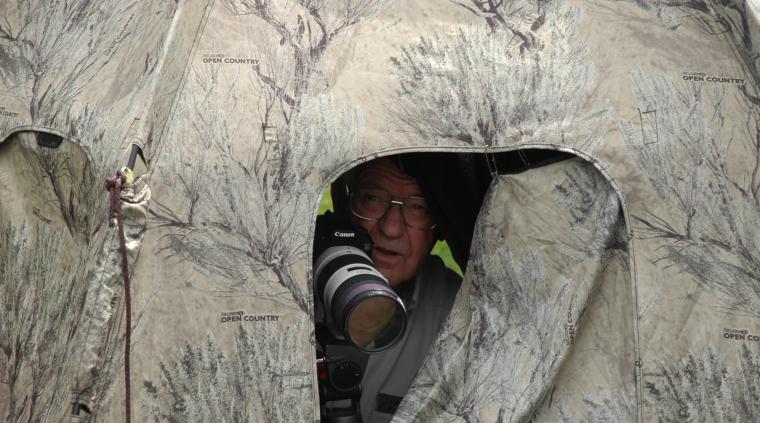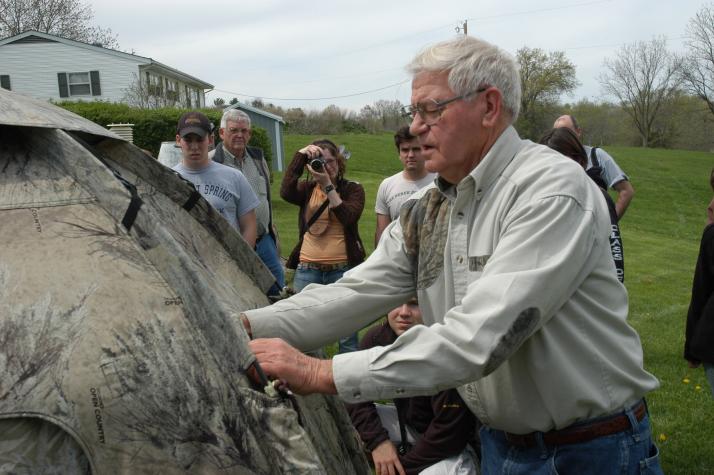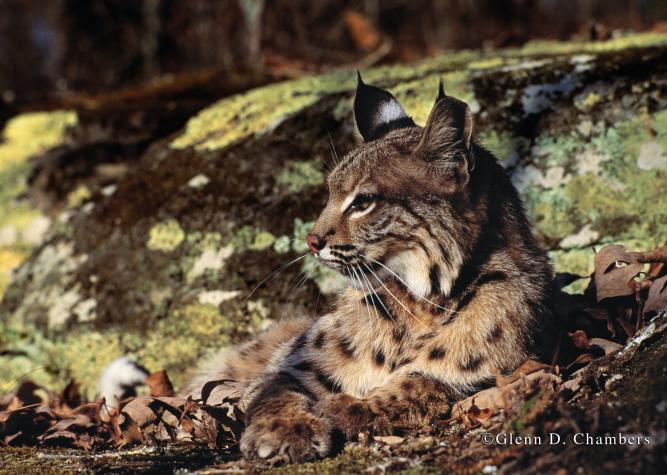NEW FRANKLIN, Mo. - Have you ever snapped a picture of a striking outdoor vista only to find that the image recorded by your camera is less than impressive? Taking good outdoor photographs doesn't necessarily require lots of expensive equipment or advanced technical skills, according to two of Missouri's premier wildlife photographers. However, it does take persistence and a practiced eye for details.
Glenn Chambers, coordinator of the MU School of Natural Resources' Wetlands Center for Excellence, has captured close-up pictures of animals seldom glimpsed, let alone photographed. In a photography career spanning more than 40 years, Chambers has shot photos of elusive critters such as bobcats, coyotes and Alaskan grizzly bears. His work has appeared in magazines such as Audubon, National Geographic and Missouri Conservationist.
Chambers and David Stonner, a photographer for the Missouri Department of Conservation, shared tips with University of Missouri students at an outdoor photo workshop April 26 at MU's Horticulture and Agroforestry Research Center in New Franklin. The workshop was organized by the School of Natural Resources Student Council.
Stonner explained some basic steps even a weekend photographer can use to take better pictures.
A common temptation for amateurs confronted with a breathtaking panorama is to try to get as much of it in the frame as possible. "A wide angle is not necessarily the best," Stonner said. "Cut out clutter and extraneous detail. Zoom in on what drew you into the picture." Objects or people in the foreground can sometimes help by giving a sense of scale.
Photographers need to pay attention to light even on sunny days, he said. The angle and direction of light determines which elements of the image are highlighted and which are obscured by shadows.
Shooting with the sun at your back provides full, even lighting on your subject-but the results can be bland. Shooting your subject with side- or back-lighting can literally put your picture in a whole different light. A polarizing filter can cut glare and bring out vivid colors.
Stonner said that using flash isn't just for nighttime or indoor photography. Judicious use of flash can add depth and detail to a subject that might otherwise look flat and washed-out from direct sunlight.
Both Stonner and Chambers emphasized the importance of persistence. Taking one or two shots of an eye-catching scene probably isn't enough to do the view justice, Stonner said. With digital cameras, he added, photographers can explore many different approaches to shooting a subject without worrying about the cost of film and processing.
In assignments for Audubon and other magazines, Chambers sometimes spent literally years on a single project, undertaking research, exploring sites and closely observing wildlife.
Unlike humans, animals generally do not stand still to have their pictures taken, so Chambers usually has to install himself in a blind-a tent typically camouflaged with branches, leaves and other vegetation. For a 1965 nighttime close-up photo of a ruffed grouse, Chambers initially set up his blind 75 feet from a log where he had seen the bird perch. Over a three-month period, Chambers gradually moved the blind closer and closer to the log.
On another assignment, Chambers spent 101 days documenting a nest of turkey vultures in a hollow tree trunk. He built a blind around the trunk and cut openings in it for his camera and flash lamps. Turkey vultures ward off predators by regurgitating a foul-smelling mass of semi-digested food. The mother bird in Chambers' blind did this for 10 days before getting used to his presence.
"Once I got over the smell it was a fun assignment," Chambers said.


